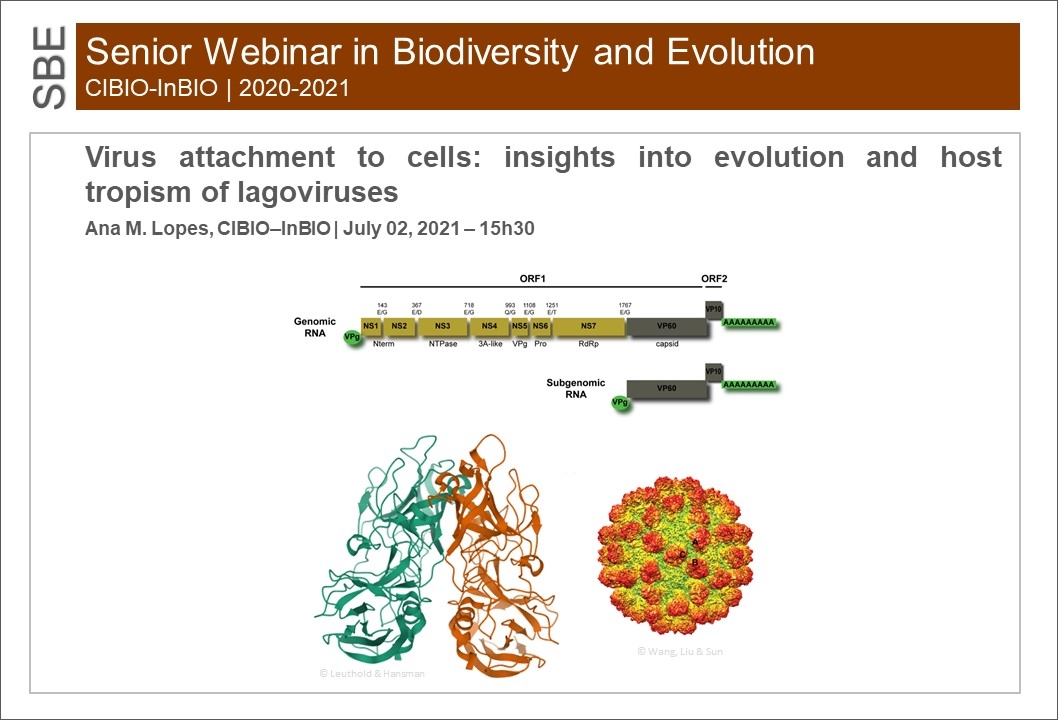Virus attachment to cells: insights into evolution and host tropism of lagoviruses
02 Jul 2021 - Ana M. Lopes, CIBIO–InBIO | 15h30

SENIOR WEBINAR IN BIODIVERSITY AND EVOLUTION
Viruses infect all living things, and the comprehensive study of the steps of virus attachment and entry into cells is key to develop antiviral strategies and understand virus evolution. Importantly, these initial stages in viral replication cycle largely determine virus tropism and have a major influence on virus pathogenesis. Lagoviruses are members of the Caliciviridae family, which also includes noroviruses and sapoviruses, among others. They infect rabbits (Oryctolagus cuniculus) and hares (Lepus spp.) and include several pathogenic and non-pathogenic genotypes, with different host and tissue tropism. Pathogenic forms comprise rabbit hemorrhagic disease virus (RHDV) and European brown hare syndrome virus (EBHSV), whilst non-pathogenic forms encompass rabbit and hare caliciviruses. Glycans expressed in the upper respiratory and digestive tract of leporids are known to play a role in RHDV attachment. We attempted to correlate glycan specificities of pathogenic and non-pathogenic lagoviruses with their virulence and ability to cross the species boundaries. Host jumps have been observed in the last few years, but the molecular mechanisms behind host shifts are unknown. Although glycan binding is not linked to virulence, species-specific patterns of glycan motifs contributes to lagoviruses’ host range.
Ana M. Lopes holds a PhD degree in Biodiversity, Genetics and Evolution from the University of Porto. She is currently a junior researcher at CIBIO in the IMED (Immunity and Emerging Diseases) group. Her main research interests focus on understanding the host-pathogen co-evolution, by using rabbit hemorrhagic disease virus and the European rabbit as a model. More recently, she has been working on a broader range of viruses, e.g. hepatitis E virus, to study the zoonotic potential of rabbit HEV at several human – animal interfaces.
[Host: Joana Abrantes, Immunity and Emerging Diseases - IMED]
Click here to watch the webinar recording
Click here to watch the webinar recording